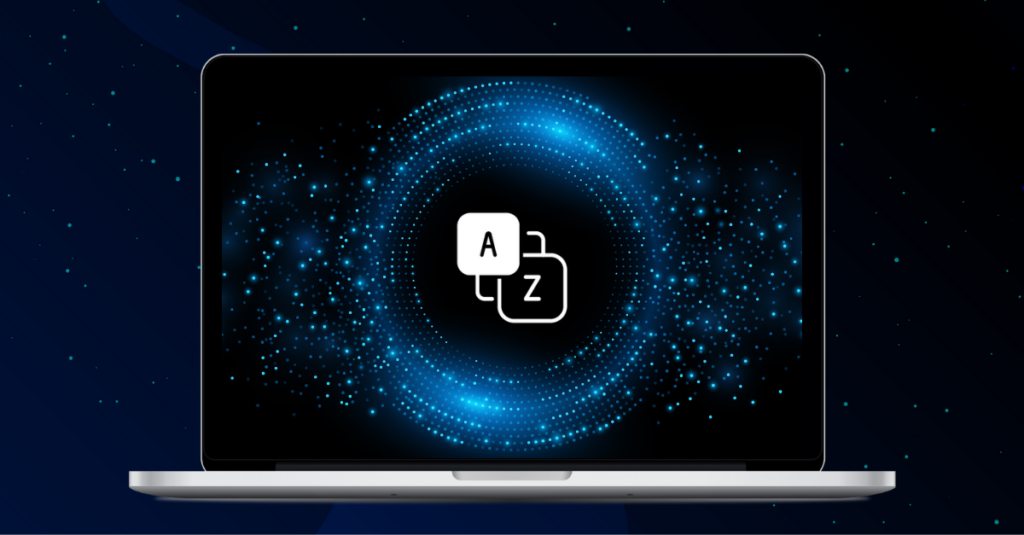Artificial Intelligence (AI) has transformed contact centres, improving customer experiences and operational efficiency. However, it’s important to recognise that AI is an umbrella term encompassing various subfields and techniques. In this blog post, we’ll delve into AI’s remarkable impact on contact centres and offer a glossary of essential AI terms used in the industry today.
What is Artificial Intelligence (AI)?
Artificial Intelligence (AI) is a field of computer science focused on creating intelligent machines that can learn, reason, and perform tasks like humans. It includes techniques such as machine learning, natural language processing, and computer vision.
Artificial Intelligence is paramount for contact centres due to its transformative impact on customer experiences and operational efficiency. Contact centres can offer instant and personalised support by leveraging AI, significantly reducing response times and enhancing overall customer satisfaction.
The benefits of AI within the contact centre
AI’s predictive analytics capabilities enable contact centres to anticipate customer needs, forecast call volumes, and identify emerging trends, to name a few benefits, empowering contact centres to manage resources and deliver seamless service proactively. Intelligent call routing and real-time decision support further optimise agent performance, leading to faster issue resolution and improved first-contact resolution rates.
Moreover, AI-driven sentiment analysis and quality monitoring provide invaluable insights into customer emotions and agent performance, fostering continuous improvement. Embracing AI not only elevates customer interactions but also streamlines processes, allowing contact centres to become more agile, customer-centric, and competitive in today’s dynamic business landscape.
Here are five benefits of AI in the contact centre:
- Enhanced CX: AI-powered virtual agents can provide instant, 24/7 support, reducing customer wait times and offering personalised responses, improving customer satisfaction.
- Data-driven insights: AI analytics can process vast amounts of data from interactions, allowing contact centres to identify trends, customer preferences, and pain points, enabling better decision-making and targeted improvements.
- Cost savings: AI-driven automation can handle routine inquiries, reducing the workload on human agents and allowing companies to streamline their workforce, resulting in cost savings.
- Continuous learning: AI systems can continuously learn from new data, improving their responses over time and staying updated with the latest information to deliver accurate and relevant support.
- Scalability and flexibility: AI-powered contact centres can easily scale to handle increasing call volumes and adapt to changing customer demands, ensuring seamless operations during peak times and unexpected events.
Your essential A to Z Artificial Intelligence glossary
Read through the AI glossary below to learn more about how the AI tools you use work.
A
- Agent Assist: AI-powered tools that provide real-time guidance and suggestions to agents, enhancing their productivity and customer interactions.
- Automated Speech Recognition (ASR): AI technology specifically designed to convert spoken language into text accurately and efficiently.
B
- Bard: Meet Bard, Google’s cutting-edge conversational AI powered by LaMDA (Language Model for Dialogue Applications). Much like ChatGPT, Bard boasts advanced capabilities, with the added advantage of pulling information directly from the vast expanse of the internet.
- Bayesian network: Delve into the realm of probability with the Bayesian network, an intelligent model that precisely estimates the likelihood of events unfolding. Leveraging the incredible speed of AI, Bayesian networks can efficiently analyze vast datasets, making AI a valuable ally in creating these models.
- BERT: Step into the world of next-level natural language processing with BERT, an ingenious deep-learning model created by Google. Designed explicitly for tasks like answering questions, sentiment analysis, and translation, BERT is a powerful force in understanding and interpreting human language.
- Bing search: Discover the wonders of Bing Search, Microsoft’s exceptional machine learning search tool. Empowered by neural networks, it goes beyond traditional search engines, truly comprehending user queries to provide the most relevant results and even generate new text-based content and images.
- Bots: Introducing bots, the versatile text-based programs that bring automation and information to our fingertips. Commonly known as chatbots, these intelligent assistants can either perform specific pre-defined tasks or boast sophisticated functionality, enhancing the way we interact with technology.
C
- Call Analytics: AI-driven analysis of call recordings and data to extract valuable insights, identify trends, and enhance agent performance.
- Chatbot: An AI-powered virtual assistant designed to engage in text-based conversations with customers, providing instant responses and assistance.
- ChatGPT: ChatGPT is a conversational AI that runs on GPT, a language model that uses natural language processing to understand text prompts, answer questions or generate content.
D
- Data privacy: In today’s AI-driven landscape, upholding data privacy and ethical principles is of paramount importance when it comes to handling customer data and interactions. This entails a thoughtful and meticulous examination of the ethical and legal implications surrounding AI usage, ensuring that customers’ rights and interests remain safeguarded at all times.
E
- Emotive AI: AI technology that detects and interprets human emotions through facial expressions, tone of voice, and other cues, enabling personalised interactions.
F
- Feature engineering: Feature engineering is selecting specific features from raw data so a system knows what to learn when training.
- Feature extraction: Feature extraction is when a machine breaks input down into specific features and uses those features to classify and understand it. In image recognition, a specific element of an image can be defined as a feature, and the feature is used to predict the likelihood of what an entire image might be.
G
- Generative AI: Generative AI processes prompts by identifying patterns and using those patterns to produce an output that aligns with its initial learning, like an answer to a question, text, images, audio, video, code, and even synthetic data.
I
- Intelligent routing: AI-based call routing system that directs customers to the most suitable agent based on their query, historical data, and agent skills.
- Image recognition: Image recognition is a machine learning process that uses algorithms to identify objects, people, or places in images and videos. Google Lens is an example of image recognition.
K
- Knowledgebase: A centralised repository of information and solutions that AI-powered systems can access to provide accurate and consistent responses to customers.
L
- Large Language Models: LLMs are trained on a large historical data set and use their knowledge to complete a specific task(s).
M
- Machine Learning: An AI approach that enables systems to learn from data without explicit programming, improving performance over time through experience.
N
- Natural Language Processing (NLP): AI technology that enables machines to understand and interpret human language, allowing interactions with customers through speech and text.
- Natural Language Generation (NLG): Natural language generation is when a model processes language and uses its understanding to accurately complete a task, whether it’s answering a question or creating an outline for an essay.
- Natural Language Query (NLQ): A natural language query is a written input that appears as it would if said aloud, which means no special characters or syntax. Neutral networks: In relation to AI, a neural network is a computerised replication of a human brain’s neural network that lets a system develop knowledge and make predictions in a similar fashion to the human brain.
O
- Omnichannel: A customer-centric approach that integrates various communication channels (e.g., voice, chat, email, social media) to offer seamless interactions.
- OpenAI: OpenAI is an artificial intelligence research laboratory that created GPT, DALL-E, and other AI tools.
P
- Predictive Analytics: AI-driven data analysis that utilises historical data to predict future outcomes and customer behaviour, aiding in proactive decision-making.
Q
- Quality Monitoring: AI-driven evaluation of agent interactions to assess performance, compliance, and customer satisfaction.
R
- Robotic Process Automation (RPA): The use of AI-powered bots to automate repetitive tasks, improving efficiency and accuracy in contact centre operations.
- Real-time Decision Support: AI tools that assist agents during customer interactions, providing relevant information and suggestions to enhance service quality.
S
- Sentiment Analysis: The use of AI to determine the emotional tone of customer interactions, helping contact centres gauge customer satisfaction and sentiment.
- Speech Recognition: AI technology that converts spoken language into text, enabling voice interactions and transcription of customer conversations.
T
- Training data: Training data is what a machine is given to learn from to complete its future tasks.
- Transfer learning: Transfer learning is a machine learning technique where a pre-trained model is used as the starting point for a new task.
U
- Unsupervised learning: Unsupervised learning is when a system is left to find patterns and draw conclusions and insights from data without human input. It’s the opposite of supervised learning.
V
- Virtual Assistant: An AI-powered application that interacts with customers in a human-like manner, providing assistance, answering queries, and guiding them through processes.
- Virtual Queue Management: AI-driven system that optimises customer wait times and agent availability, ensuring efficient call routing and handling.
- Virtual Reality (VR): VR is any software that immerses users in a three-dimensional, interactive virtual environment using a sensory device.
Unlock the power of AI
AI is the key to unlocking contact centre excellence, elevating customer experiences and optimising operations. At Puzzel, we are committed to harnessing the power of AI to provide innovative solutions for our customers, making every customer interaction truly exceptional.
Ready to embark on your AI journey? Connect with Puzzel today to explore our advanced AI solutions and unleash the full potential of your contact centre. Together, we’ll pave the way for a brighter, customer-centric future!












 Danmark
Danmark  Sverige
Sverige  Norge
Norge  Finland
Finland  Nederlandse
Nederlandse